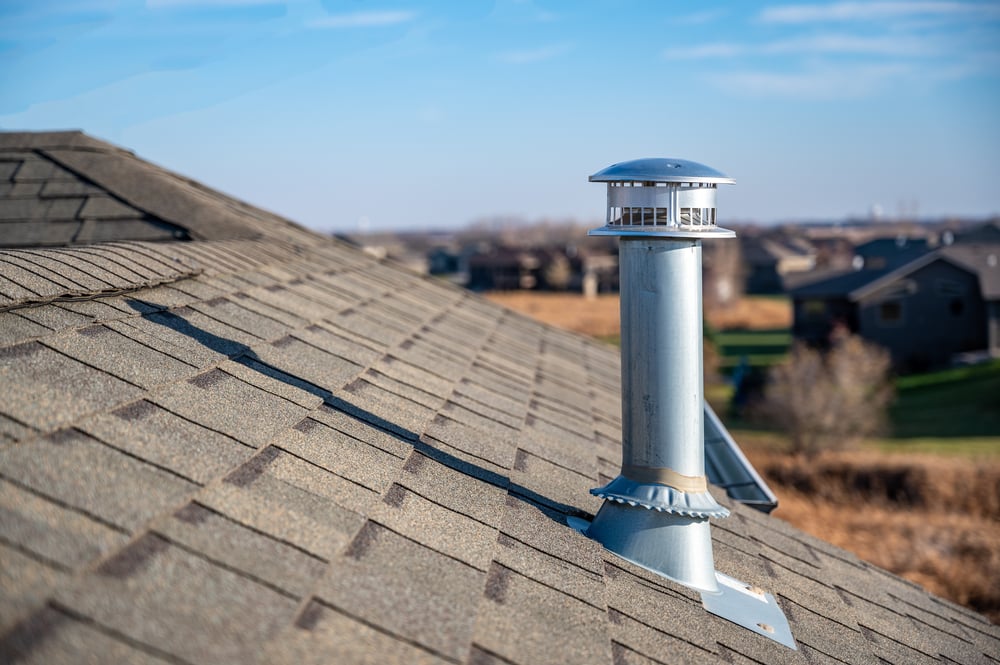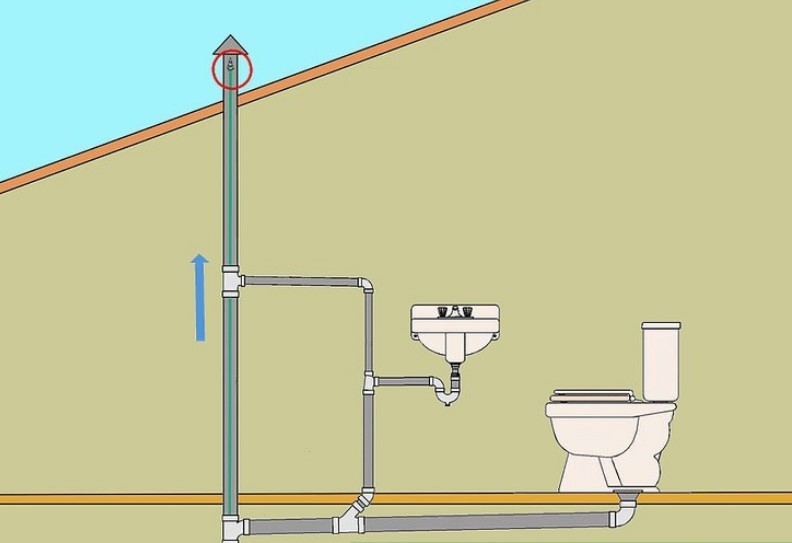Proper Ventilation in Plumbing Systems: Why It Is Essential
Proper Ventilation in Plumbing Systems: Why It Is Essential
Blog Article
They are making a few great observations regarding The Upsides of Proper Ventilation in Plumbing Design overall in this great article down the page.

Appropriate ventilation in plumbing systems is typically forgotten, yet it is critical for maintaining the performance and safety and security of your home's pipes. Air flow aids control air pressure, stop the buildup of damaging gases, and ensure the reliable elimination of waste. In this overview, we will certainly discover the value of proper plumbing ventilation, just how it functions, and the advantages it brings to your plumbing system.
Exactly How Air Flow Works in Plumbing Equipments
Atmospheric Pressure Regulation
Correct air flow maintains well balanced air pressure within the plumbing system. When water moves via pipelines, it displaces air. Without appropriate ventilation, this displacement can develop unfavorable pressure, leading to reduce drains or siphoning of water from traps, which can trigger unpleasant odors to leak into the home.
Avoiding Sewage System Gas Accumulation
Among one of the most vital features of plumbing vents is to prevent sewage system gases, such as methane and hydrogen sulfide, from gathering within the home. These gases can position serious wellness risks and are very flammable. Vent pipelines allow these gases to get away securely outside.
Helping in Waste Elimination
Ventilation aids in the reliable removal of wastewater by protecting against airlocks in the drainage system. When air can move easily via the vents, it permits water and waste to flow smoothly with the pipelines, decreasing the danger of obstructions and back-ups.
Benefits of Appropriate Ventilation
Improved System Efficiency
Effectively ventilated plumbing systems run more effectively, with fewer blockages, faster draining, and less pressure on the pipelines. This effectiveness prolongs the lifespan of the pipes system.
Improved Air High Quality
By stopping sewer gases from entering your home, correct ventilation adds to much better indoor air top quality, making your living environment healthier and more comfy.
Avoiding Water Damages
Appropriate ventilation aids avoid water from being siphoned out of catches, which can cause sewage system gases going into the home and triggering water damage in time.
Steps to Make Certain Appropriate Ventilation
Consulting Pipes Codes
Constantly consult local plumbing codes when designing or changing your plumbing system. These codes supply the needed guidelines for appropriate airing vent and guarantee your system fulfills safety and security criteria.
Normal Evaluation and Maintenance
Routine evaluations can assist recognize possible ventilation issues before they become major troubles. Upkeep tasks, such as cleaning vent pipes and looking for clogs, are necessary for keeping the system in good working order.
Professional Setup
For brand-new setups or major modifications, it's wise to work with a specialist plumbing professional. They have the competence to make certain the ventilation system is properly created and installed according to code.
Recognizing Air Flow in Pipes
Ventilation in plumbing refers to the network of pipelines that allow air to flow via the water drainage system. These vents offer numerous purposes, including controling atmospheric pressure within the pipelines, preventing drain gases from entering the home, and helping in the smooth circulation of wastewater.
Types of Plumbing Vents
Key Heap Vent
The major pile vent, also called the vent stack, is the key air vent in a plumbing system. It prolongs from the major drainpipe align with the roofing, permitting gases to leave and fresh air to enter the system.
Branch Vent
Branch vents connect to the major pile air vent and serve private components, such as sinks, bathrooms, and showers. These vents ensure that each component has appropriate air flow to work correctly.
Air Admission Valve (AAV).
An Air Admittance Shutoff (AAV) is a one-way valve that permits air to get in the pipes system without the need for a traditional vent pipeline expanding with the roofing. AAVs are generally made use of in improvements or areas where mounting a common air vent is impractical.
Indications of Poor Ventilation in Plumbing.
Slow Draining Fixtures.
If your sinks, tubs, or toilets are draining slowly, it could be a sign of poor ventilation. Poor air flow can create a vacuum result, making it hard for water to drain correctly.
Gurgling Appears.
Gurgling sounds originating from drains pipes are typically an outcome of air being sucked with water catches due to unfavorable pressure in the pipes. This is a clear sign of not enough air flow.
Unpleasant Smells.
Drain smells inside your home are a red flag that your plumbing system is not effectively ventilated. This might imply that sewage system gases are not being appropriately vented outside, leading to potentially harmful problems.
Common Ventilation Mistakes.
Inadequate Vent Sizing.
Making use of small air vent pipelines can bring about inadequate air circulation and pressure imbalances in the system. It's necessary to make use of vents that fulfill the certain demands of your plumbing system.
Improper Vent Positioning.
Putting vents also much from the fixtures they offer can decrease their effectiveness. Correct placement makes certain that air can stream openly and effectively via the system.
Ignoring Code Needs.
Building codes give particular guidelines for plumbing air flow. Ignoring these codes can cause a system that fails to function properly and may lead to costly repair services or carcinogen.
Conclusion.
Proper air flow is an important element of any kind of plumbing system, making certain that it works successfully and safely. By recognizing the importance of air flow, acknowledging the indications of bad ventilation, and taking actions to preserve your system, you can stop costly concerns and secure your home's air high quality.
4 Things You Should Know About Your Plumbing Vents
What Plumbing Vents Are
Also called a vent stack, a plumbing vent is a vertical pipe attached to your drain line that runs through your roof. The plumbing vent pipe, or plumbing air vent, removes gas and odors from your plumbing system and allows fresh air to enter the pipes, helping the water to flow out of the drain pipes.
What Plumbing Vents Do
Plumbing vents have two basic functions. One of which is to allow unpleasant smelling wastewater and sewer gasses to escape your plumbing system instead of entering your home. Plumbing vent pipes are typically located on roofs, away from windows, to ensure the fumes exit the home completely.
The other function of the plumbing vent is to move fresh air into your plumbing system. This helps move water through every plumbing fixture in your house, like toilets and sink drains. Think of the way in which you need to let a little air into the bottle as you pour soda in order to make the drink flow smoothly.
Different Types of Plumbing Vents
True vent: This is the most common vent option. In simplest terms, a true vent is a vertical pipe attached to your drain line that exits through the roof. They often function as the main vent that other fixtures can connect to. Re-vent pipe or auxiliary vent: Attached to the drain line near specific plumbing fixtures, re-vent pipes run up and over to connect to the main vent. Common vent: Two plumbing fixtures installed on opposite sides of a wall are typically tied into the vent stack using something known as a sanitary cross. Wet vent: This venting option operates as a drain pipe and a vent at the same time. Wet vent drainage systems drain water from one fixture while venting the air from another. Although they’ve been used for over 100 years, wet vent systems have only recently been added to the plumbing code in many areas. If you’re planning on installing one in a bathroom remodel, make sure you check your local code prior to construction. Loop vent: For free-standing fixtures like kitchen island sinks, loop vents are ideal. These vent pipes run under the floor, rise from the P-trap, and create a loop inside the cabinet sink. Air admittance valve: An AAV is a one-way mechanical valve typically installed at the site of the plumbing fixture. AAVs allow venting to occur without having to tie into a larger venting system. They’re ideal for venting fixtures where you aren’t able to easily connect to an existing vent system. Common Plumbing Vent Issues
Although vent pipes typically don’t have water flowing through them, they’re still subject to many typical plumbing issues. For example, clogs are one of the most common problems associated with sewer vent pipes. If your vent pipe gets clogged, all of your plumbing fixtures tied into the vent stack will be affected.
A sink with a slow drain that bubbles and gurgles or a strong sewage smell around your toilet are both indicators that your toilet vent pipe is clogged. Because most vent pipes exit through the roof, old leaves, twigs or even a bird’s nest could be clogging the pipe.
Clogs in your vent pipe system cause a buildup of negative pressure, meaning that water won’t be able to flow out of your home very well. It’s similar to putting your finger over the opening of a straw to trap water inside. When you remove your finger, the water is able to flow out of the straw.
If you suspect you have any blockage in your vent, make sure you have a professional come examine the situation. Left unchecked, a blocked air vent can lead to other costly repairs, like leaks and sediment buildup.
Under Pressure
Pipe vents are essential aspects of a home’s plumbing system. Owning a home means learning about all sorts of things you never put much thought into before. But by understanding as much as you can about the important systems of your home, you can keep those budgets intact and those anxiety levels low.
https://www.homeserve.com/en-us/blog/home-improvement/plumbing-vents/

I came across that write up on What Are Plumbing Vents and Why Are They Important? when doing research the search engines. Sharing is caring. You won't know, you might be helping someone out. We treasure reading our article about The Upsides of Proper Ventilation in Plumbing Design.
Check Us Out Report this page